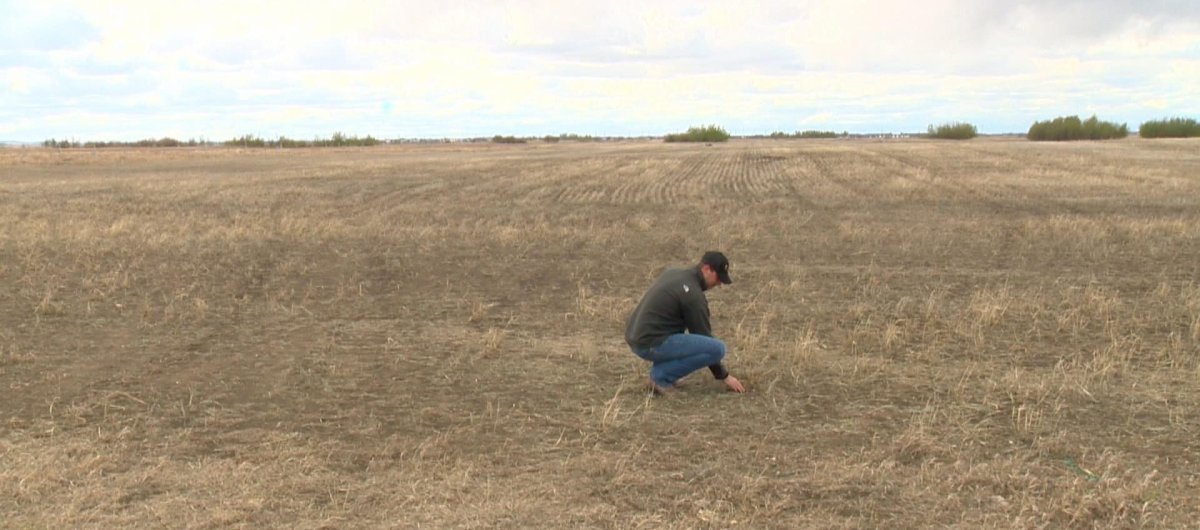Crop development in Saskatchewan has been slow this year and it differs depending on the area as some regions are too dry and others are too wet.

According to the latest provincial crop report for June 21-27, the early season drought conditions in the west and excess moisture in the east are leading factors for the slow crop development.
“We saw that most of the heavy rainfall came down in the southeast, parts of the east central and then, of course, up in the northern regions that did get that heavy rainfall are experiencing some sort of either minor to severe flooding. And also with that came a lot of hail as well. So there’s a bit of crop damage along with that precipitation. And then, of course, still in the west, there’s many, many spots that are very dry, especially the southwest,” Matt Struthers, the crops extension specialist with the Ministry of Agriculture said.
Although it did rain in certain areas across the province this last week, more precipitation is still needed in many regions. Some areas experienced flooding and drowned-out crops due to high volumes of rain in a short time period. Producers in those regions hope that the water will soak in quickly and the impact on crops will be minimal.
“Crops don’t like to grow when their feet are wet. When they’re standing in water for for long periods of time, there’s not a lot of growth. It’s quite detrimental to them, so that’s lagging them a bit up. Hopefully things dry out there in the east and the crops are able to to pick up where they started and and get through July,” Struthers said.
In the west, where conditions remain dry, rain was welcomed for crop land and pastures, although it did delay the start to haying season for some producers.
“When we look at the west, we started out very dry and then the western regions have gotten some moisture in the past couple of weeks, the crops there look much better than they did previously. You know, they’ve bounced back quite a bit. So that’s very promising. I should mention that there are still very dry areas and that those those regions and and those crops are suffering,” he said.
The Spiritwood area received 86 mm, the Broadview area 76 mm, the Lipton area 70 mm, the Kerrobert area 31 mm and the Cabri area 23 mm. Many areas in the southwest only received one to five mm and the crops in those areas are beginning to show signs of severe drought stress.
“I remember when it used to rain and everyone would get rain, but now it just kind of seems that there are very small cluster clouds and they’re very localized. And that’s why we’re seeing such heavy rainfall in some areas and other areas are still bone dry,” Struthers said.
The majority of crops in the province are in fair to good condition according to the report. Provincially, 76 per cent of the fall cereals, 58 per cent of the spring cereals, 46 per cent of the oilseed crops and 69 per cent of the pulse crops are at their normal stages of development for this time of year.
According to the report, the majority of the crop damage in the last week has been from heat, dry winds, drought, insects, gophers, flooding and hail.
Struthers added that extreme weather conditions certainly damage crops. It’s detrimental in many ways as the crop might be torn up, destroyed or flattened by extreme hail, storms, tornados, etc.
“Unfortunately, farmers just have to sit back and hope that their fields are missed by those storms and that they can get through the season with minimal damage,” Struthers said.
Insects can also play a huge role in crop damage across the province. “We see it just about every year with flea beetles depending on and, you know, treatments and other treatments that are used on those canola plants,” Struthers said. “Beetles are a pretty big issue this year, certainly for some producers. Grasshoppers are a huge spike last year and it looks like they’re on the rise again this year.”
He added that gophers are also on the go thanks to the dry period in the last few years.
With the recent rains it’s looking bad for haying in the west than in the east, as it is still very dry in the west. Growth in the west was delayed early in the season due to drought; the hay crop in many areas has also not reached an acceptable height that will allow for cutting.
Rain delayed hay cutting in the east, although the crops in the region appear to be in much better shape since they had adequate moisture early in the season to allow for recovery and growth.





Comments